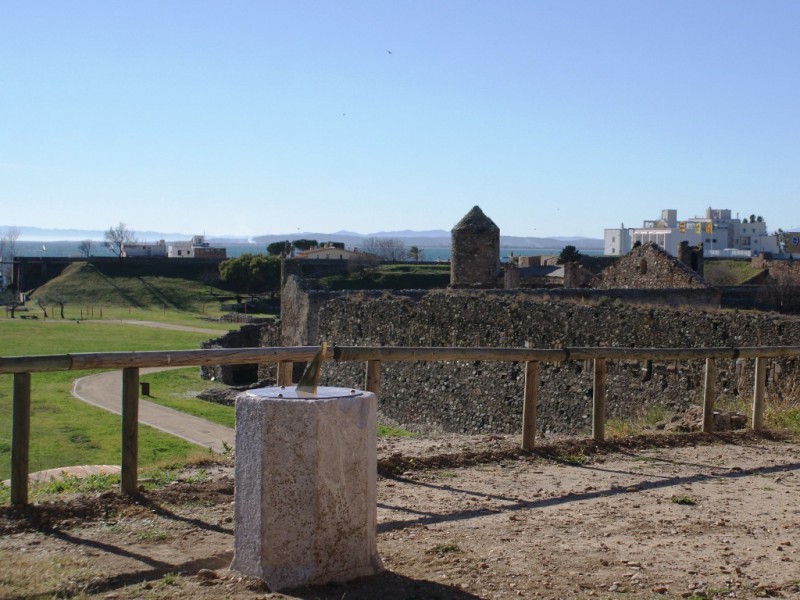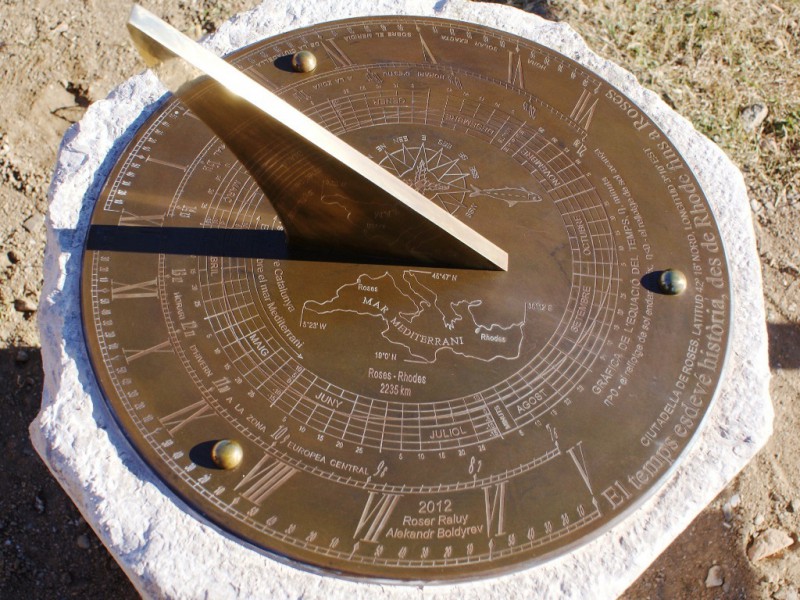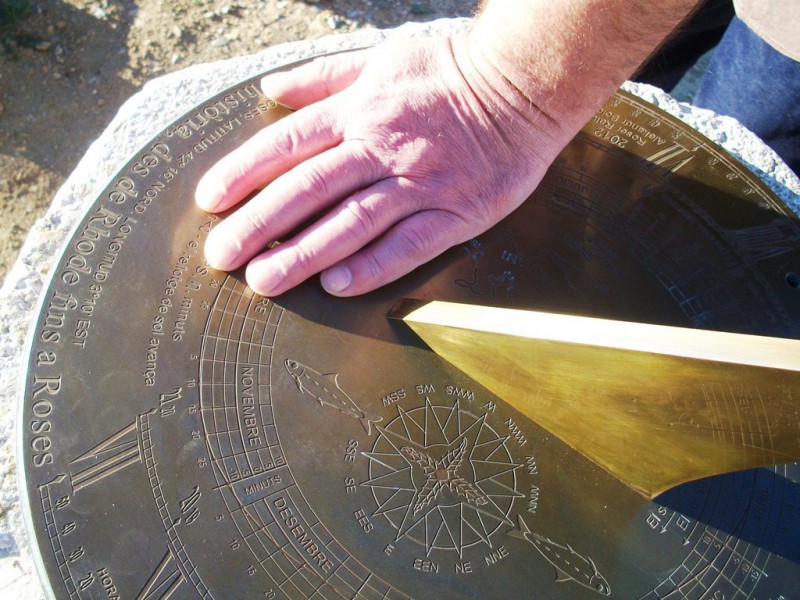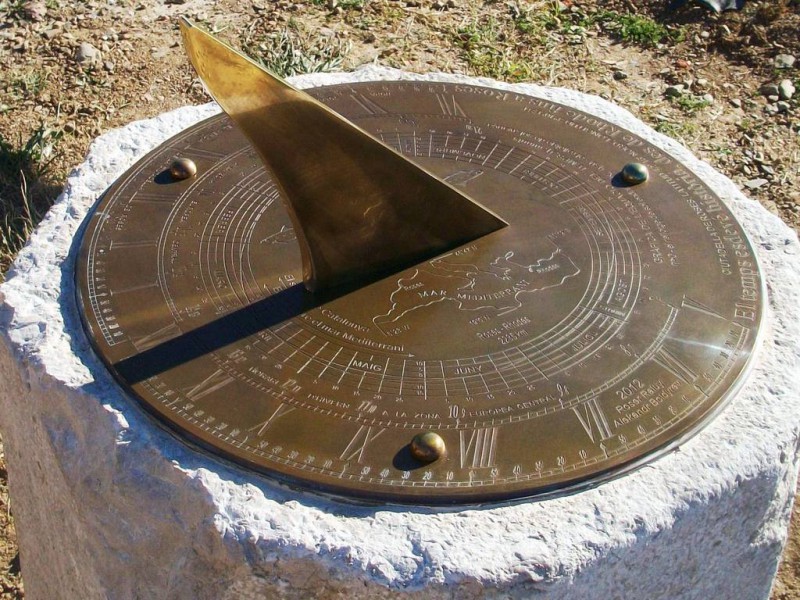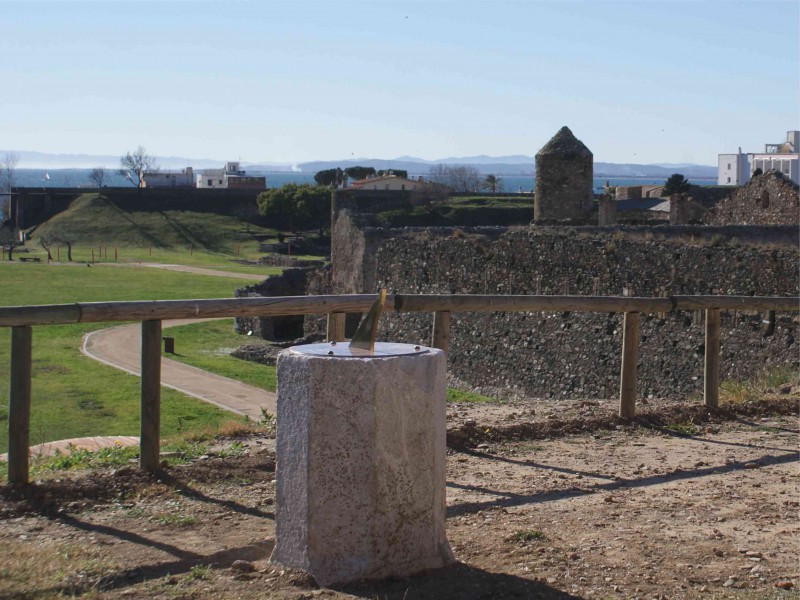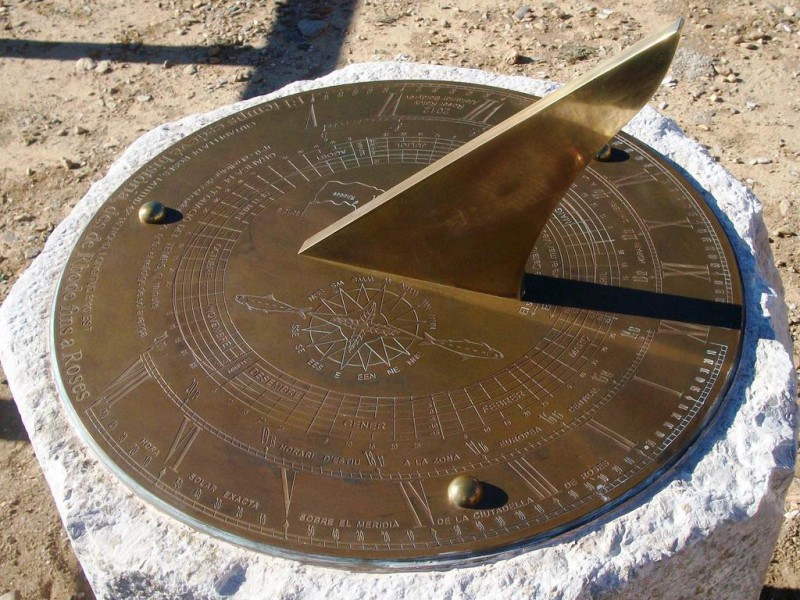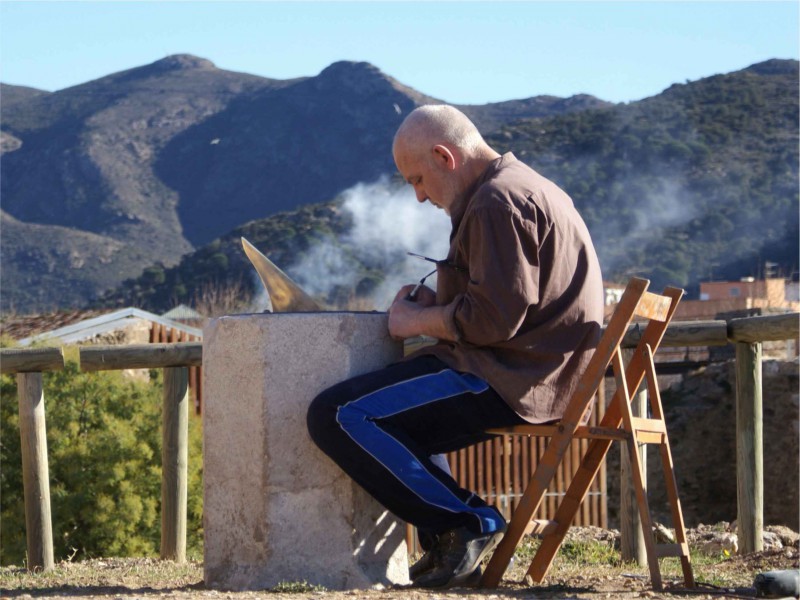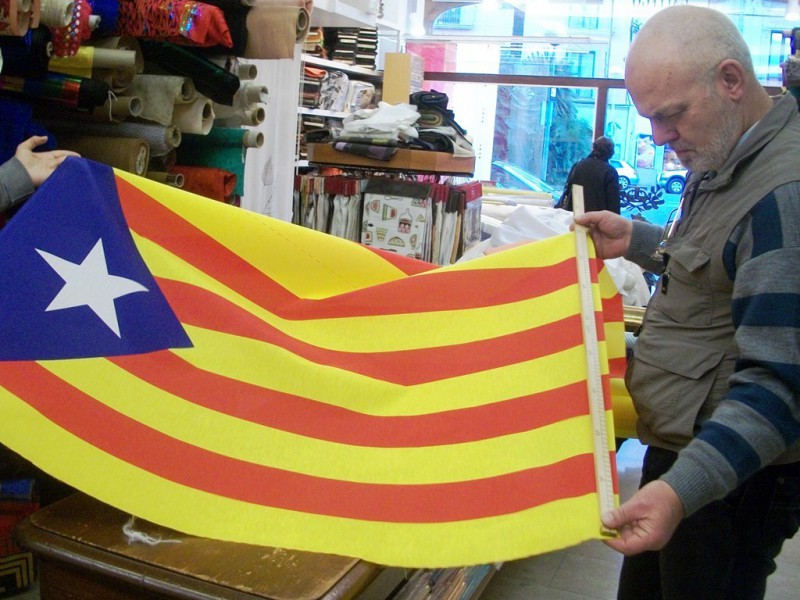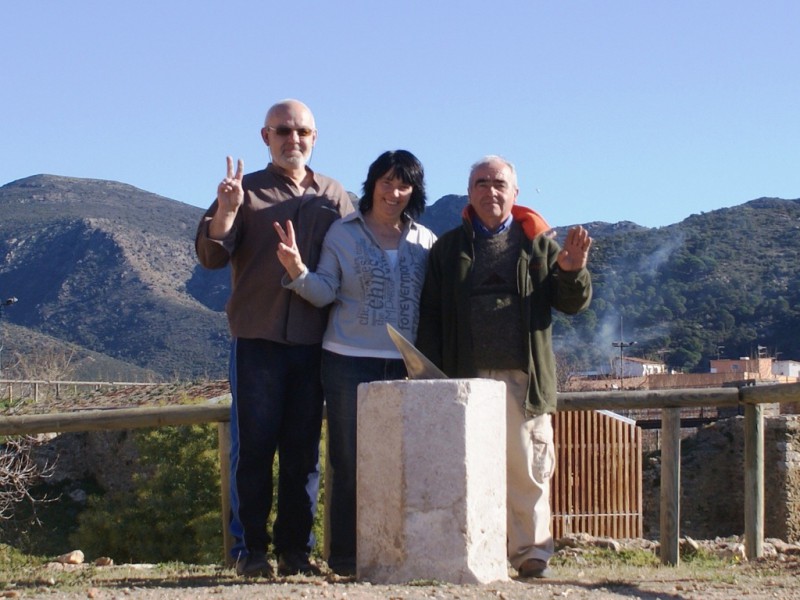Aleksandr Boldyrev sundials
Sundials and cultural artifacts
Museum of the Citadel of Roses, Girona, Spain
Specifications.
The only copy. Brass. Diameter 440 mm. The pedestal is made of marbleized limestone. It is part of a bridge that was destroyed about 350 years ago and delivered to the Citadel of Roses from Basque Country. The height of the pedestal is 650 mm. The instrument and pedestal are made in collaboration with Roser Raluy Viňals (Serveis educatius i culturals SL; educart@educart.biz) with a kind support of the Town Hall of Roses. Installation place: 42° 16'05,20˝ N; 3° 10'16,25˝ E, Citadel of Roses, City of Roses, Girona, Spain
Description.
The instrument measures true solar time at the meridian of the Museum of the Citadel in terms of local and standard (Central European summer and winter) true solar time. To calculate the mean time on the base of true solar time the instrument has a graph of the equation of time. Compass rose, apart from the usual notation, is decorated with the image of Mediterranean sardine (Sardina pilchardus, W.) and with the image of drachma attributed to the fourth century BC. This drachma was found during the excavations in the Citadel. Historical data show that the city of Roses was founded in the 4th century BC by Greeks who came from the island of Rhodes. The motto is"Eltempsesdevé historia, des de Rhode fins a Roses — Time turns into a story. From Rhodes to Roses”. The map of Mediterranean sea is etched on the dial, which indicates the location of the island of Rhodes and the city of Roses. The instrument is provided with sectors that let you know when the sun is above Catalonia (12 minutes 30 seconds), and the sun is above Mediterranean Sea (3 hours 28 minutes).
